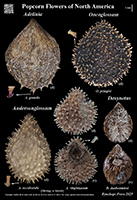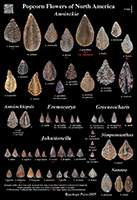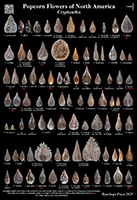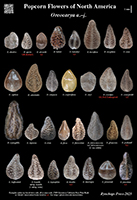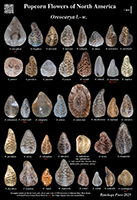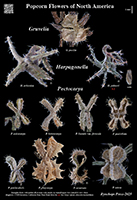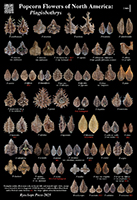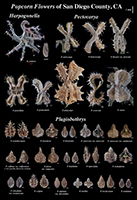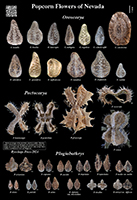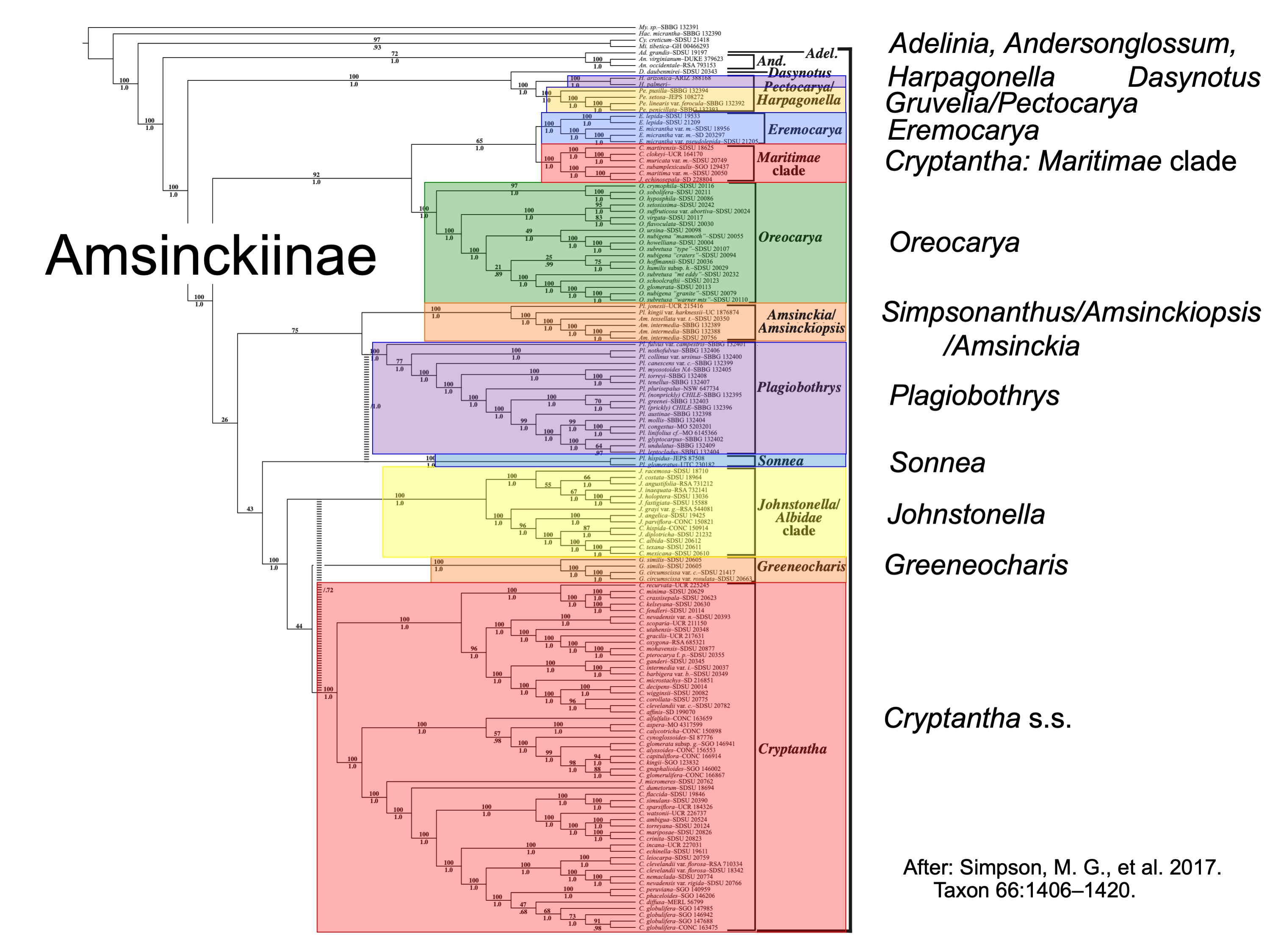Balderis, E., C. M. Guilliams, K. E. Hasenstab-Lehman, M. E. Mabry, and M. G. Simpson. 2019. Amsinckiinae Working Group: Nutlet diversity of Amsinckiinae
in western North America. Poster (pdf; png) presented at Botany 2019. Tucson, Arizona.
Brand, A. 1931. Borraginaceae-Borraginoideae-Cryptantheae. Pp. 1-236 in A. Engler (ed.), Das Pflanzenreich. 97. Verlag von Wilhelm Engelmann, Leipzig.
subtribe Eucryptantheae (p. 22); subtribe Amsinckiiae (p. 204)
Chacón, J., F. Luebert, H. Hilger, S. Ovcinnikova, F. Selvi, L. Cecchi, C. M. Guilliams, K. Hasenstab-Lehman, K. K. Sutorý, M. G. Simpson, and M. Weigend. 2016.
The borage family (Boraginaceae s.str.): A revised infrafamilial classification based on new phylogenetic evidence, with emphasis on the placement of some
enigmatic genera. Taxon 3: 523-546.
Chacón, J., F. Luebert, and M. Weigend. 2017. Biogeographic events are not correlated with diaspore dispersal modes in Boraginaceae. Frontiers in Ecology
and Evolution 5 (Article 26):1-14.
Cohen, J. I. 2014. A phylogenetic analysis of morphological and molecular characters of Boraginaceae: evolutionary relationships, taxonomy, and patterns of
character evolution. Cladistics 30: 139-169.
Cohen, J. I. 2015. Adelinia and Andersonglossum (Boraginaceae), two new genera from New World species of Cynoglossum. Systematic Botany 40: 611–619.
El-Shazly, A. and M. Wink. 2014. Diversity of pyrrolizidine alkaloids in the Boraginaceae: Structures, distribution, and biological properties.
Diversity 6:188-282. doi: https://doi.org/10.3390/d6020188
Guilliams, C. M. 2015. Diversification, biogeography, and classification of the Amsinckiinae (Boraginaceae), with an emphasis on the popcorn flowers
(Plagiobothrys). PhD Dissertation. University of California, Berkeley, Berkeley, California.
Guilliams, M. C., K. Hasenstab-Lehman, M. Mabry, and M. G. Simpson. 2017. Memoirs of a frequent flier: Phylogenomics reveals 18 long-distance dispersals
between North America and South America in the popcorn flowers (Amsinckiinae, Boraginaceae). American Journal of Botany 104:1717-1728.
Guilliams, C. M., K. Hasenstab-Lehman, and B. G. Baldwin. 2020. Nomenclatural changes in western North American Amsinckiinae (Boraginaceae). Novon 28:51-59.
Hasenstab-Lehman, K. E. and M. G. Simpson. 2012. Cat’s eyes and popcorn flowers: Phylogenetic systematics of the genus Cryptantha s.l.
(Boraginaceae). Systematic Botany 37:738–757.
Hasenstab-Lehman, K. E. 2017. Phylogenetics of the borage family: Delimiting Boraginales and assessing closest relatives. Aliso: A Journal of Systematic
and Evolutionary Botany 31:41-49.
Kelley, R. B., M. G. Simpson, and K. E. Hasenstab. 2012. Cryptantha. Pp. 455-468 in B. G. Baldwin, D. H. Goldman, D. J. Keil, R. Patterson,
T. J. Rosatti, and D. H. Wilken (eds.), The Jepson Manual: Vascular Plants of California. Second Edition. University of California Press, Berkeley,
Los Angeles, London.
Långström, E. and M. W. Chase. 2002. Tribes of Boraginoideae (Boraginaceae) and placement of Antiphytum, Echiochilon, Ogastemma and
Sericostoma: A phylogenetic analysis based on atpB plastid DNA sequence data. Plant Systematics and Evolution 234:137-153.
Luebert, F., L. Cecchi, M. W. Frohlich, M. Gottschling, C. M. Guilliams, K. E. Hasenstab-Lehman, H. H. Hilger, J. S. Miller, M. Mittelbach, M. Nazaire, M. Nepi,
D. Nocentini, D. Ober, R. G. Olmstead, F. Selvi, M. G. Simpson, K. Sutorý, B. Valdés, G. K. Walden, and M. Weigend. 2016. Familial classification of the
Boraginales.
Taxon 65: 502–522 .
Mabry, M. E. and M. G. Simpson. 2018. Evaluating the monophyly and biogeography of Cryptantha (Boraginaceae). Systematic Botany 43:53-76.
Nazaire, M. and L. Hufford. 2012. A broad phylogenetic analysis of Boraginaceae: Implications for the relationships of Mertensia.
Systematic Botany 37:758–783.
Otero, A., P. Jiménez-Mejías, V. Valcárcel, and P. Vargas. 2014. Molecular phylogenetics and morphology support two new genera (Memoremea and Nihon)
of Boraginaceae s.s. Phytotaxa 173:241-277.
Ovchinnikova, S. 2009. On the position of the tribe Eritrichieae in the Boraginaceae system. Botanica Serbica 33:141-146.
Schwarzer, C. 2007. Systematische Untersuchungen an den peruanischen Vertretern der Gattungen Pectocarya D.C. ex Meisn., Amsinckia
Lehm., Plagiobothrys Fisch. & C.A. Mey. und Cryptantha Lehm. ex G. Don (Boraginaceae). Dissertation: Biology Institut für Biologie
Systematische Botanik und Pflanzengeographie, Freie Universität Berlin.
Simpson, M. G., C. M. Guilliams, K. E. Hasenstab-Lehman, M. E. Mabry, and L. Ripma. 2017. Phylogeny of the popcorn flowers: Use of genome skimming to
evaluate monophyly and interrelationships in subtribe Amsinckiinae (Boraginaceae). Taxon 66:1406–1420.
Sutory´, K. 2010. Oncaglossum, a new genus of the Boraginaceae, tribe Cynoglosseae, from Mexico. Novon 20:463–469.
Sutory’, K. 2019. Ailuroglossum (Boraginaceae, Cynoglosseae), a new genus endemic to southern China, and a new species. Novon 27:131-136.
Weigend, M., F. Luebert, F. Selvi, G. Brokamp, and H. H. Hilger. 2013. Multiple origins for Hound’s tongues (Cynoglossum L.) and Navel seeds
(Omphalodes Mill.) – The phylogeny of the borage family (Boraginaceae s.str.). Molecular Phylogenetics and Evolution 68: 604–618.
Weigend, M., F. Luebert, M. Gottschling, T. L. P. Couvreur, H. H. Hilger, and J. S. Millerd. 2014. From capsules to nutlets—phylogenetic relationships
in the Boraginales. Cladistics 30:508-518.
